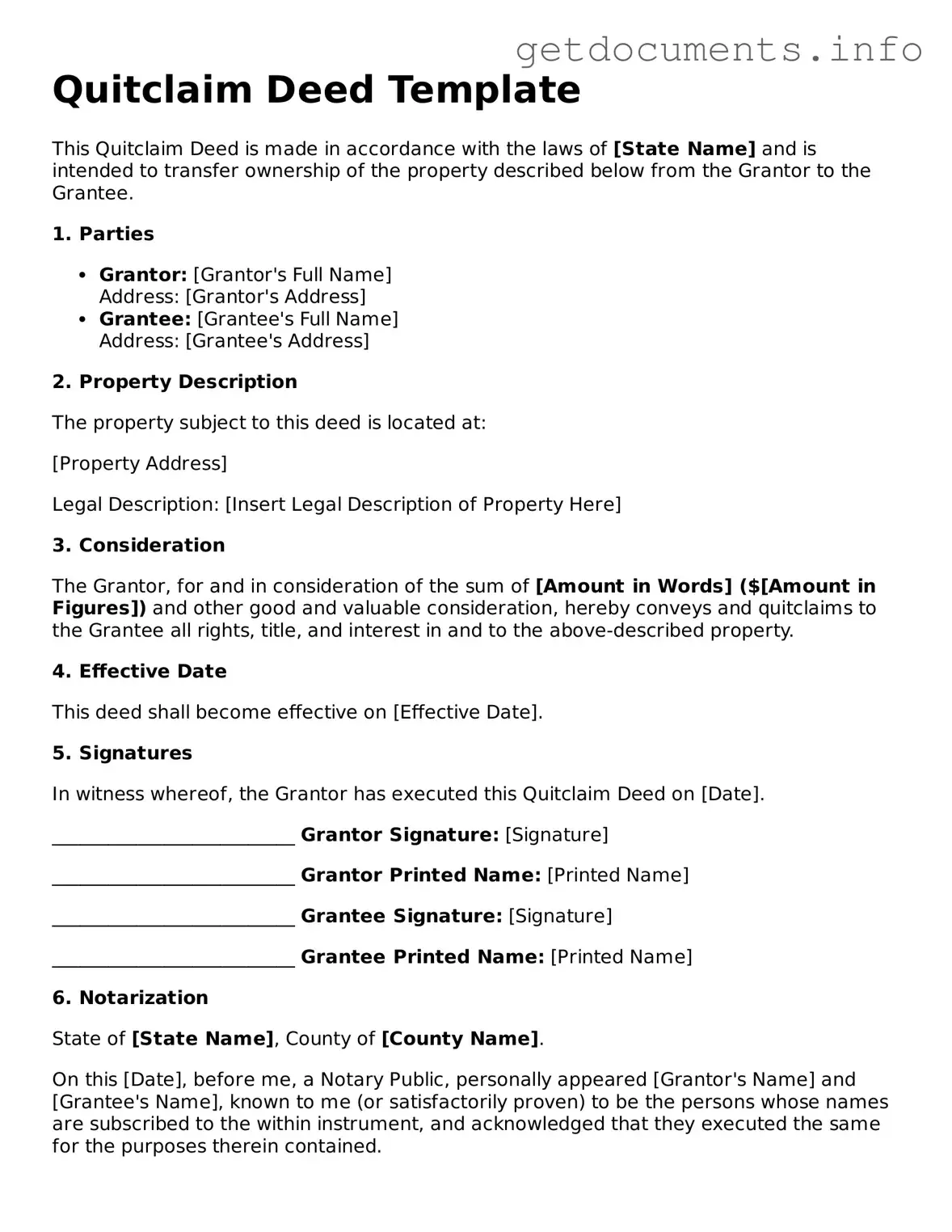Printable Quitclaim Deed Document
A Quitclaim Deed is a legal document that allows a property owner to transfer their interest in a property to another person without making any warranties about the title. This form is often used in situations such as divorce settlements or transferring property between family members. To get started on your own Quitclaim Deed, click the button below.
Access Quitclaim Deed Editor
